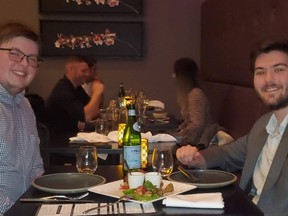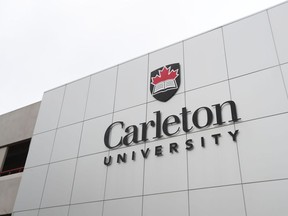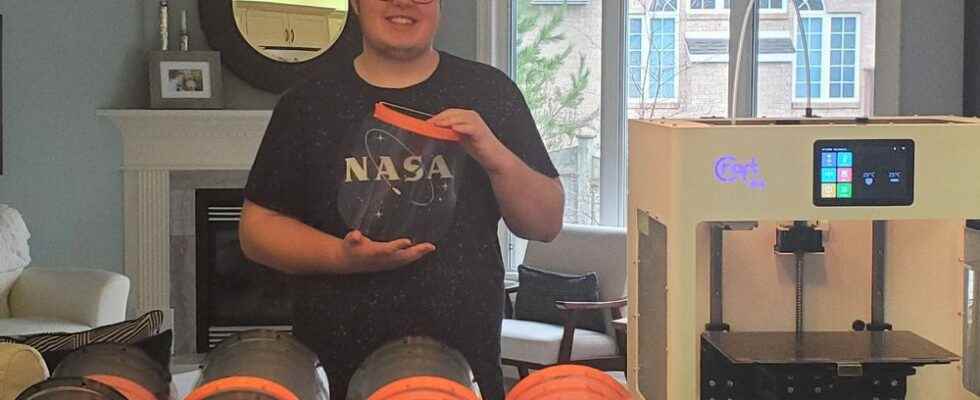
A Sarnia engineering student had a successful, but unexpected, run recently at provincial and national competitions.
Jared Waller, and his roommate at Carleton University, Julian Nicolai from the Toronto area, earned spots at the Ontario Engineering Competition and Canadian Engineering Competition after seeing a notice for their school’s contest and deciding to enter.
“I thought, ‘That looks like a fun day,” Waller said. “We had no idea it involved more.”

They applied to enter the school competition which called for re-designing a table for the modern worker to use at home.
“We made this awesome little table, and we won.” Waller said.
That’s when they discovered the prize included moving on to the provincial competition in January.
There, they were given a week to figure out what to do with waste water coming from the site of the Fukushima nuclear disaster in Japan.

“They’re running out of storage,” and the challenge was to come up with an economical solution, Waller said.
After spending most of the week trying to come up with a way to treat the water and then deciding that wasn’t an option, Waller said, “I was sitting their thinking, ‘I wonder how much an oil tanker costs?’”
Because the water only needed to be stored for two years so the radiation could decay enough for it to be released into the ocean, Waller and his teammate proposed buying a used oil tanker as a storage vessel.
“We ended up with this crazy, far-out solution” and thought, “there’s no way we’re going to get any further in this competition,” he said.
The second challenge was designing a solution for economical pot growing in an apartment. “That one wasn’t as cool,” Waller said about their entry, “but, surprise, surprise, with our weird and funny solution of the oil tanker” they placed second and earned a spot at the national competition held a few weeks ago .
There they had a week to come up with a way to use a 40-foot shipping container and other items, including two wind turbine blades, to design something to attract tourists to the Saint John, New Brunswick area where the contest was based.
Waller said they worked on, and then rejected, a couple of ideas and as time was running out, “we were sitting at 2 am and banging our heads on our desks” and came up with the building a telescope.
They designed the world’s largest public use telescope out of the shipping container that could be hand operated and driven by gearing and levers that could offer “a stellar view of the solar system,” Waller said. “You could see Jupiter up close . . . you could see craters on the moon.”
The second challenge to be solved in a day was “a bit of a thinker” to come up with a system to generate power from waste, Waller said.
After rejecting some obvious solutions, they came up with using waste plastic and wood to make five-metre by five-metre buoys to generate electricity as waves move them up and down.
Each buoy would remove wood and plastic from the waste stream and produce enough electricity for 250 homes, Waller said.
“That ended up earning us third place in the competition and most innovative design in Canada,” he said.
Waller said they had hoped the competitions, set for Toronto and Saint John, would be in-person events they could travel to but both ended up being held virtually because of pandemic restrictions.
Waller, in his third year in electrical engineering at Carleton, said it’s the first time he enters a competition at the school.

“We had a good time” and plan to enter again next year, Waller said. “We definitely want to try and take first” at the provincial and national events, he said.
Waller graduated from Northern Collegiate in Sarnia where he became interesting in engineering after being part of the school’s eco-marathon team building fuel-efficient vehicles for a competition sponsored by Shell.
“I was originally going to be a chef but the eco-marathon kind of grabbed me and took me for a ride,” Waller said.
Early in the pandemic, Waller set up a home business using 3D printers to make what were then scarce plastic face shields for health care workers after he and his fellow students were sent home from Carleton during the initial shutdown.
